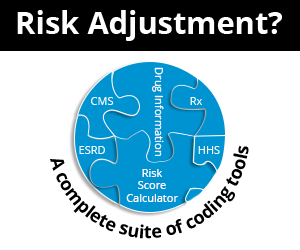
Coding Selective and Non Selective Catheter Placement of Lower Extremity
July 29th, 2016 - CodapediaSelective versus Non Selective Catheter Placement
In diagnostic catheterization, codes are given simply at the final position of the catheter. This can be simply understood if we know the anatomy of Aorta. As we know, most of the major arteries arise from Aorta for example, Inominate artery, Left common carotid artery, Left subclavian artery, celiac trunk, superior mesenteric artery, inferior mesenteric artery and Common Iliac artery. The arteries arising directly from the aorta form an individual vascular family. Now, the catheter moves in the aorta either in retrograde or antegrade direction. Now, suppose for an access the catheter is inserted on left femoral artery and the catheter moves in the opposite direction to right femoral artery, this movement is called retrograde movement. On the contrary, if the catheter moves from left femoral artery into the left side only, is considered an antegrade movement of catheter. Now, if you can understand retrograde and antegrade movement of catheter, you can understand what is Selective and Non Selective Catheter Placement? Also in interventional radiology coding, we sometimes use ipsilateral(antegrade) orcontralateral(retrograde) direction to document the movement of catheter. Now, suppose the physician want to study the right femoral artery. The physician takes an access in the left femoral artery and moves the catheter to aorta. Now, here if you know the anatomy of aorta, to move a catheter from one vascular family to another it has to pass through aorta. Now, when we are taking access on left side and moving towards right, we have to pass through aorta. Therefore, when the catheter reaches Aorta it is always considered as Non Selective Catheter Placement area (CPT® code 36200). Now, when the catheter cross the aorta and enters into another family, Selective catheterization starts. Always remember one rule:
“Code Selective catheterization over Non-selective Catheterization”
Now, when we are passing the catheter in the retrograde direction, form left femoral artery to aorta to right femoral artery, we are entering from Non Selective Catheter Placement to Selective catheter placement Zone. So, whenever we are coding do not code Non-Selective Catheterization code 36200 along with Selective catheterization (36245-36247) unless both have Separate access (will learn in next Para)
Coding of Lower Extremity Vascular Family
The CPT® codes are divided based on branches. The first branch Common iliac artery arising directly from aorta is considered as first order artery (36245). The secondary branches like internal iliac, external iliac and common femoral artery are considered as secondary order artery (36246). The arteries arising from the second order arteries are called as Third order arteries (36247). In addition, we have an Add-on code 36248 if an additional artery is catheterized from same vascular family. So, whenever the CPT® codes are coded for lower extremity the code for highest order is coded. The highest order will include the lower order procedure codes hence the highest order catheterization is coded.
36245- Selective catheter placement, arterial system; each first order abdominal, pelvic, or lower extremity artery branch, within a vascular family
36246- Selective catheter placement, arterial system; initial second order abdominal, pelvic, or lower extremity artery branch, within a vascular family
36247- Selective catheter placement, arterial system; initial third order or more selective abdominal, pelvic, or lower extremity artery branch, within a vascular family
36248 - Selective catheter placement, arterial system; additional second order, third order, and beyond, abdominal, pelvic, or lower extremity artery branch, within a vascular family (List in addition to code for initial second or third order vessel as appropriate)
So, if we are selecting Common iliac artery first (36245), followed by Common Femoral artery (delete 36245, code 36246) and the again the catheter is moved ahead and placed at superficial femoral artery (delete 36246, code 36247) and selecting additional artery Profunda femoris artery as well to study (code 36248). Therefore, the final code will be 36247, 36248.
Coding of Lower extremity vascular family with different access
Sometimes the physician takes different access to study the same vascular family. In such case, each vascular access is coded separately. For example, first access is taken in left femoral artery to study right common femoral artery (36246) and he took one more access from left common iliac artery to study right common iliac artery (36245-59). Now, hope you would have understood that the time and work taken for both access was same hence, we have to code both the access separately. Take a note of use of 59 modifier as well, since we are cannot code 36246 and 36245 together. Because 36245 is included in 36246, we are using 59 modifier with 36245 just to tell the payer that the 36245(second access) procedure is different from the 36246 (first access).
| Citations: | Selective over non-selective catheter placement, |
###
Questions, comments?
If you have questions or comments about this article please contact us. Comments that provide additional related information may be added here by our Editors.
Latest articles: (any category)
Artificial Intelligence in Healthcare - A Medical Coder's PerspectiveDecember 26th, 2023 - Aimee Wilcox
December 22nd, 2023 - Find-A-Code
December 19th, 2023 - Aimee Wilcox
December 12th, 2023 - Aimee Wilcox
November 14th, 2023 - Aimee Wilcox
October 26th, 2023 - Wyn Staheli
October 11th, 2023 - Wyn Staheli


